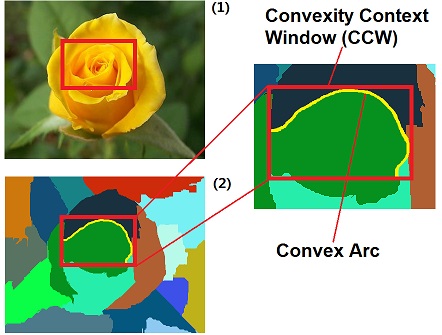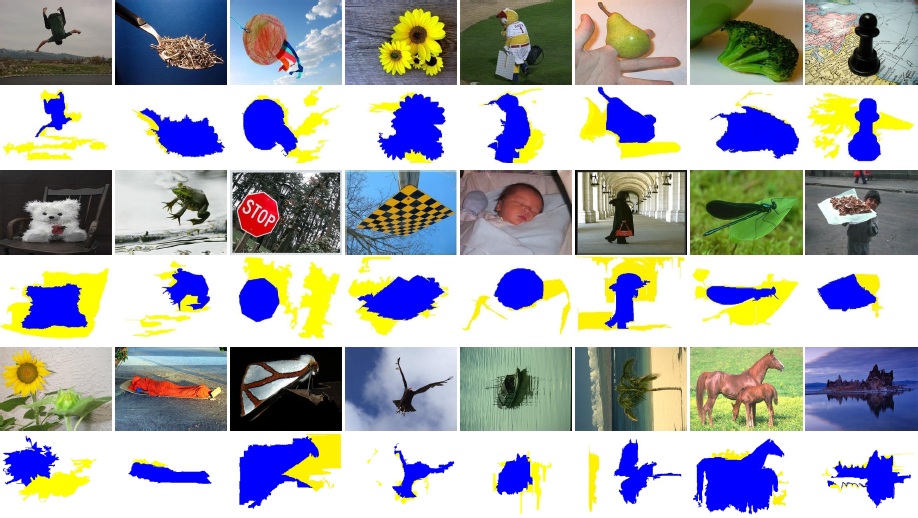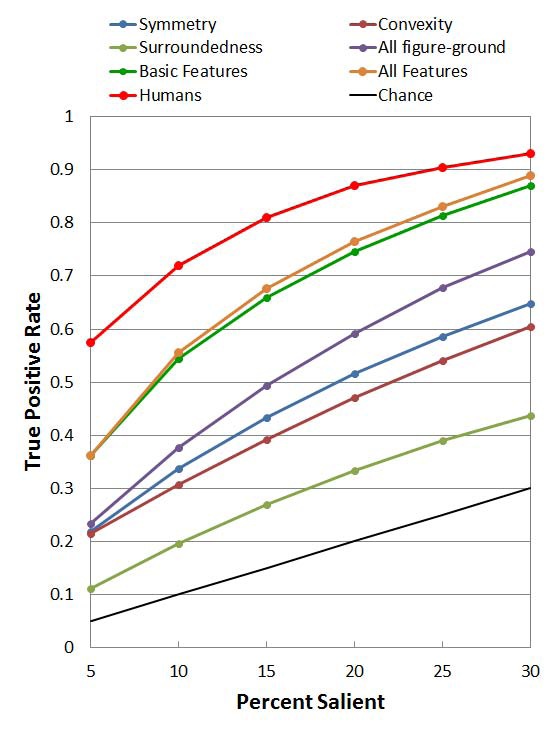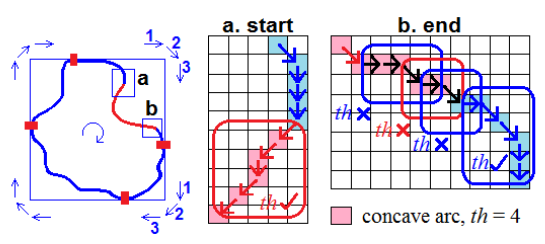Figure-ground and perceptual organization can be traced back to the 1920s.
Many rules have been found by Gestalt psychologists including convexity, parallelism,
symmetry, orientation, surroundedness and object familiarity etc [1,2]. Fig 1 demonstrates
the cue of convexity: if there is a boarder line between two neighboring regions,
region on the convex side tends to be foreground. In Fig 1(l), borderline between
the black vase and white face has similar degree of convexity when seen from two
sides, which causes some confusion of which part is foreground. However the black
part in Fig 1(r) has much higher convexity than the write one, and people may see
the black part as foreground.  Figure 1. (l) face-vace, (r) convexity Inspired by this cue, we can compute convexity along object boundaries and assign figure/ground labels for contours and regions. Here we propose a simple algorithm to detect convexity (concave arcs on superpixel boundaries, that is, curves with local maximum concavity). Fig 2 demonstrates a concave arc (yellow curve).  Figure 2. Concave arc.
Overall the computational complexity is O(n), and n equals to the number of pixels on superpixel boundaries. Two solutions exist for calculating convexity including the classic convex hull algorithm and C. Fowlks’s approach in [3]. However the first algorithm is of relative high computational cost O(nlogn), and more importantly, it suffers from the noisiness problem. Meanwhile the second solution aims at assigning probabilities to be foreground for each pixel along object boundaries. Application in salient object detection The first and most direct application for convexity detection is salient object detection, which can also be recognized as figure-ground segmentation. In my ICCV2011 paper a hierarchical segmentation model is utilized to merge convexity in different scales of images. Next I use a graph to represent segment pieces and adjust affinity between nodes using information that comes from the detected concave arcs. Finally a graph cut algorithm is performed to obtain figural segment pieces. The framework is shown in Figure 4 below.     Figure 4. Flowchart to detect salient object using convexity.
 Figure 5. Some results. Blue: salient object (region), yellow: background. Application in attention prediction
 Figure 7. Experimental results. Papers Y. Lu, W. Zhang, H. Lu, X. Xue. Salient Object Detection using Concavity Context. 13th IEEE International Conference on Computer Vision (ICCV). Barcelona, Spain. 2011.[PDF] Y. Lu, W. Zhang, C. Jin, X. Xue. Learning Attention Map from Images. IEEE International Coference on Computer Vision and Pattern Recognition (CVPR). Providence, USA. 2012. [PDF] Reference [1] S. Palmer. Vision science: Photons to phenomenology, volume 1. MIT press Cambridge, MA., 1999. [2] Figure-ground perception. http://www.scholarpedia.org/article/Figure-ground_perception [3] C. Fowlkes, D. Martin, and J. Malik. Local figure–ground cues are valid for natural images. JOV, 7(8), 2007. [4] T. Judd, K. Ehinger, F. Durand, and A. Torralba. Learning to predict where humans look. ICCV 2009. Return |


